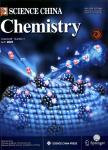版权所有:内蒙古大学图书馆 技术提供:维普资讯• 智图
内蒙古自治区呼和浩特市赛罕区大学西街235号 邮编: 010021

作者机构:Key Laboratory of Analytical Chemistry fo r Biology and Medicine(Ministry of Education)College of Chemistry and Molecular SciencesWuhan UniversityWuhan 430072China Institute of Chemical Biology and NanomedicineState Key Laboratory of Chemo/Biosensing and ChemometricsCollege of Chemistry and Chemical EngineeringHunan UniversityChangsha 410082China Department of UrologyUnion HospitalTongji Medical CollegeHuazhong University of Science and TechnologyWuhan 430022China Key Laboratory fo r Micro-fNano-Optoelectronic Devices of Ministry of EducationSchool of Physics and ElectronicsHunan UniversityChangsha 410082China
出 版 物:《Science China Chemistry》 (中国科学(化学英文版))
年 卷 期:2020年第63卷第7期
页 面:997-1003页
核心收录:
学科分类:081702[工学-化学工艺] 080202[工学-机械电子工程] 08[工学] 0817[工学-化学工程与技术] 0802[工学-机械工程]
基 金:supported by the National Key Research and Development Program of China (2017YFA0208000) the National Natural Science Foundation of China (21925401, 21904033, 21675120) Changsha Municipal Science and Technology Projects, China (kq1901030)
主 题:MoS 2 field effect transistor bladder cancer sensor array NMP22 CK8
摘 要:Bladder cancer is one of the commonest malignant tumors of urinary system with high recurrence. However, currently developed bladder cancer urine diagnosis methods are hindered by the low detection sensitivity and accuracy. Herein, a molybdenum disulfide(MoS2) nanosheets-based field effect transistor(FET) sensor array was constructed for simultaneous detection of multiple bladder cancer biomarkers in human urine. With the excellent electronic property of MoS2 and the high specific identification capability of recognition molecules, the proposed biosensor array could simultaneously detect nuclear matrix protein 22(NMP22) and cytokeratin 8(CK8) with a wide linear range of 10-6–10-1 pg mL-1 and an ultra-low detection limit of 0.027 and 0.019 aM, respectively. Furthermore, this highly sensitive and specific MoS2 FET sensor array could be used to identify bladder cancer biomarkers from human urine samples. This designed high-performance biosensor array shows great potential in the future diagnosis of bladder cancer.